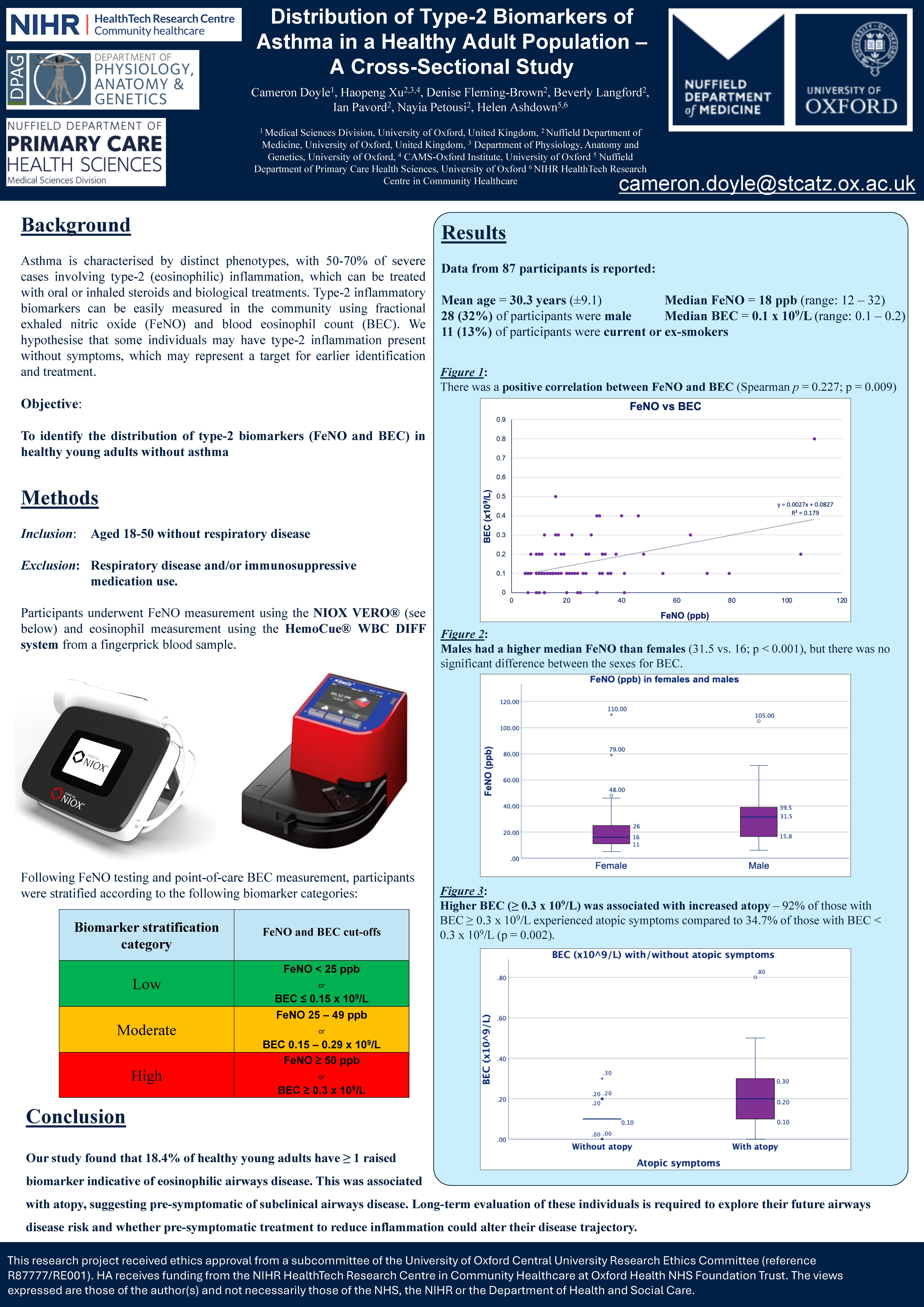Distribution of Type-2 Biomarkers of Asthma in a Healthy Adult Population – A Cross-Sectional Study (ID 530)
University of Oxford
Abstract
Aim
Asthma is characterised by various inflammatory phenotypes; 50-70% of severe cases involve type-2 (eosinophilic) inflammation. Type-2 biomarkers such as fractional exhaled nitric oxide (FeNO) and blood eosinophil count (BEC) are crucial for diagnosis and treatment. Examining these biomarkers in healthy adults could aid early asthma detection. This study presents preliminary findings on type-2 inflammation biomarkers among healthy young adults.
Method
This cross-sectional study recruited participants aged 18-50, without respiratory disease or immunosuppressive medication use. FeNO and BEC were measured, with participants categorised by biomarker levels: low (FeNO < 25ppb or BEC ≤ 0.15x109/L), moderate (FeNO 25-49 ppb or BEC 0.15-0.29x109/L), and high (FeNO ≥ 50ppb or BEC ≥ 0.3x109/L). Mann-Whitney U tests compared groups, and Spearman correlation assessed the relationship between BEC and FeNO.
Results
Data from 87 participants showed a mean age of 30.3 (± 9.1) years; 28 (32%) were male, and 11 (13%) were current or ex-smokers. Sixteen participants (18.4%) had high biomarker levels (FeNO ≥ 50 ppb or BEC ≥ 0.3x109/L) (Table 1). Median FeNO was 18 ppb (IQR 12-32 ppb) and median BEC was 0.1x109/L (IQR 0.1-0.2x109/L). A positive correlation was found between FeNO and BEC (Spearman p = 0.277, p = 0.009). Males had a higher median FeNO than females (29 vs. 16 ppb; p < 0.001), with no significant difference in BEC between the sexes. Higher BEC (≥ 0.3x109/L) was linked to increased atopy; 92% of those with high BEC had allergic symptoms compared to 34.7% with lower BEC (p = 0.002).
Conclusion
The study revealed that 18.4% of healthy young adults exhibit at least one biomarker indicative of eosinophilic airways disease. This was associated with atopy, suggesting potential pre-symptomatic or subclinical airways disease, warranting long-term follow-up to assess future disease risk and the impact of early treatment on disease progression.
Funding: NIHR Oxford Biomedical Research Centre
John Fell Fund
Conflicts of interest: None
The conference has been instigated and organised by PCRS. We are grateful to sponsors and exhibitors who have contributed funding towards this event in return for exhibition space. Neither sponsors or exhibitors have had any input into the agenda or the selection of speakers with the exception of any sponsored satellite symposia which are clearly indicated. View the full list of sponsors.
